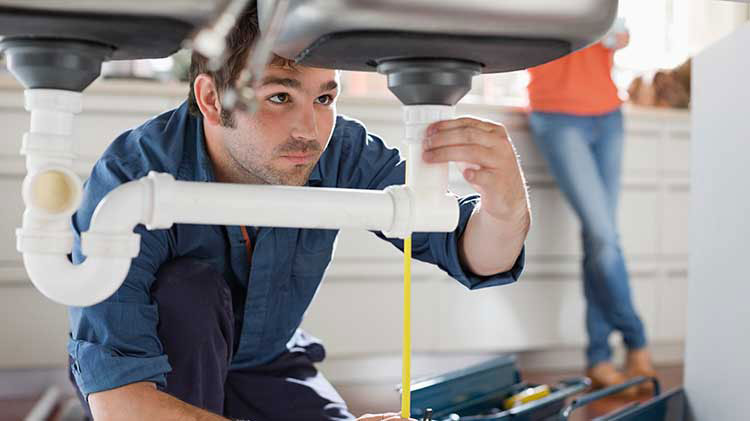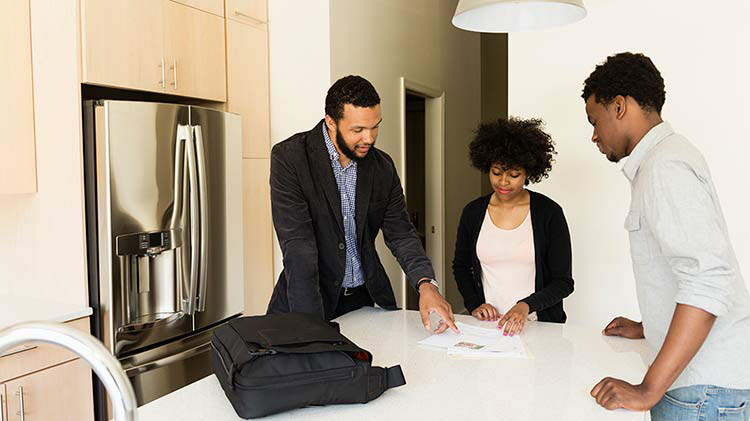What are typical landlord maintenance responsibilities?
There are ways to break down the landlord responsibilities for maintenance and equip yourself to better address repairs while minimizing preventable issues.
Landlords have many responsibilities when it comes to effectively managing their properties. These responsibilities don't end once the tenants have moved in. Maintenance is the most dreaded and stressful of them all. At any point in time, an appliance could break requiring immediate action on your part. Maintenance issues can cost you money, time and often, both. This is the reality of owning a property, but there are ways you can break down these responsibilities and equip yourself to better address repairs while minimizing preventable issues.
List of landlord responsibilities
The hardest job for any landlord is finding a good tenant. A tenant credit check, criminal background check and eviction check from a screening service can make this part of the process easier.
Owning a rental property is a business and the product is your property. Serious business owners take steps to make sure their products are in the best condition possible and realize the benefit this provides their customers, and the profitability of the business. Not only do landlords legally have to provide their tenants with a habitable home, but being attentive to the needs of your property will set the example for your tenants and make them more likely to care for the property as a result.
Every property is different, but here are the main things that landlords are required to fix or repair anytime there is an issue:
- Visible mold.
- Pest removal.
- Major plumbing issues.
- Heat and electric.
- Hot and cold water.
- Proper functioning of included appliances.
- Structural integrity concerns.
- Any issue that indicates the unit is not habitable.
Also, remember states may vary and have additional laws when it comes to the condition of your property.
It's inevitable that some things will go wrong with the property that are out of your control and will require you to coordinate repairs. However, preventative maintenance will help limit the number and the severity of the repairs, saving you time, money and stress. Many landlords only address reactive repairs and overlook the value of taking steps that may prevent a large maintenance request down the road.
Property management maintenance
The first step is to set the standard from day one. Make sure the property is clean and in great shape when the tenants move in. Your tenants are more likely to keep the property clean and take better care of it for you if you've done the same for them.
Next, a move-in checklist will help you track the condition of the unit over time and motivate your tenants to prevent wear and tear on the property. Something as simple as having your tenants go through the checklist and signing it can have a huge impact on how they choose to treat the property. Many rental lease terms are 12 months or more, so if you don't get the checklist in writing, then any issues you find when the tenants move out could create a big headache. It'll be your word versus theirs about what issues were pre-existing and what damage was a result of the tenants. A signed move-in and move-out checklist will prevent general wear and possibly larger maintenance requests, too.
Landlords have a responsibility to pay for maintenance that wasn’t caused by the tenant and to address it in a timely fashion. Although no one can predict exactly how much money maintenance will cost each year, landlords should build potential repair costs into their budget. Typically, landlords should save 50% of their monthly rent price on maintenance per year. If your annual rent income is $12,000, then you should save $6,000 per year for maintenance.
Landlord inspections
Other ways to limit maintenance issues from arising at inopportune times is to do an annual inspection of the property. By checking for signs of water damage, pests and cracks in the ceiling, you can address these items early while they are still small, before they turn into major issues. Other things to do during an annual inspection include checking smoke and CO2 detectors, replacing air filters and making sure there's no new damage that violates the lease agreement, such as smoking in the property.
It is important to communicate with your tenants. You need to give them notice before entering. It is typically 24 to 48 hours, and the terms should be clearly outlined in your rental agreement.
Tenant responsibilities
Tenants are responsible for maintaining the condition of the rental property to the best of their ability and to promptly report any maintenance issues to their landlord. Specifically, this includes:
- Taking out the trash.
- Any damage that's caused by them or their guests above normal wear and tear.
- Any damage that's a result of breaking the lease.
Just as landlords are expected to promptly respond to maintenance issues, the tenants must inform the landlord of any maintenance issues as soon as they occur. Of course, a loose shower curtain rod is not as severe as burst pipes, but it is best to set the expectation with your tenants that they are to notify you as soon as an issue arises no matter how big or small. We suggest you make both of these requirements clear in a tenant welcome letter that you provide the tenant when they move in.
Handling requests
Some states require a response to tenants within 24 hours for major requests that affect the property's habitability. While a 48-hour response time is acceptable for smaller requests, the sooner you can address the request, the better. This way, you can continue to demonstrate your care for the property and provide a better experience for your tenants.
Encourage your tenants to use your preferred method of contact when it comes to reporting and requesting maintenance. This could be by phone, email, text or online maintenance tracking. Online tools let tenants upload photos of the problem, allow you to track progress and inform all parties when the repairs are complete.
Maintenance may be the most dreaded part of being a landlord, but knowing your responsibilities and taking a proactive approach will help you immensely when a maintenance request comes at you. By budgeting — mentally and financially — for maintenance requests, setting clear expectations and making it easy for tenants to communicate issues, you can create a lasting impression on your tenant to stand out as a landlord.




